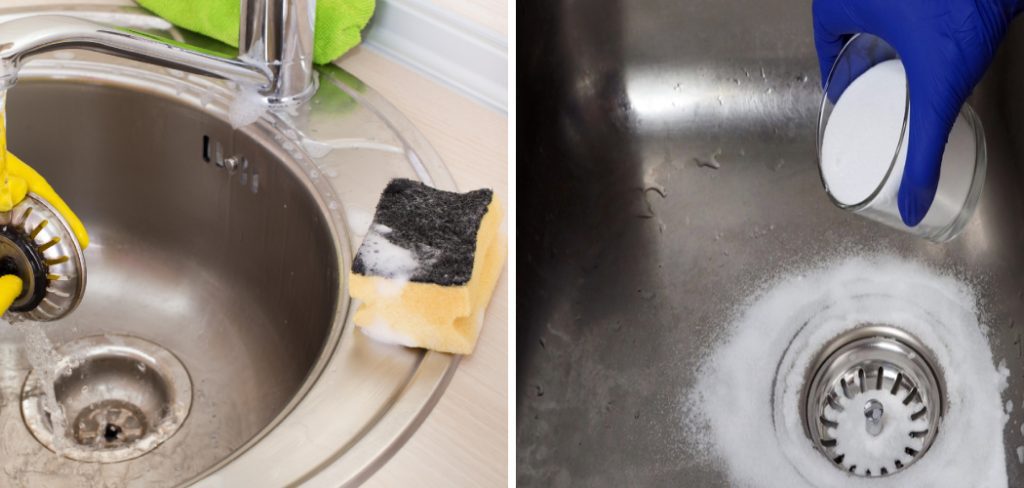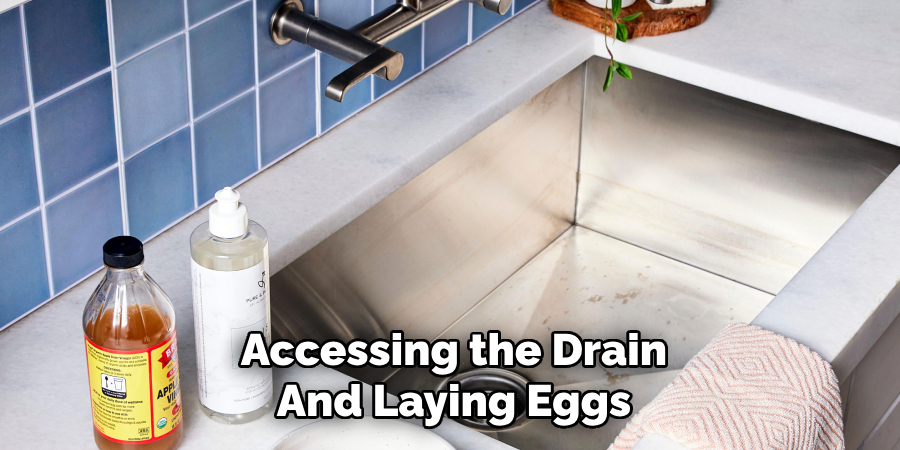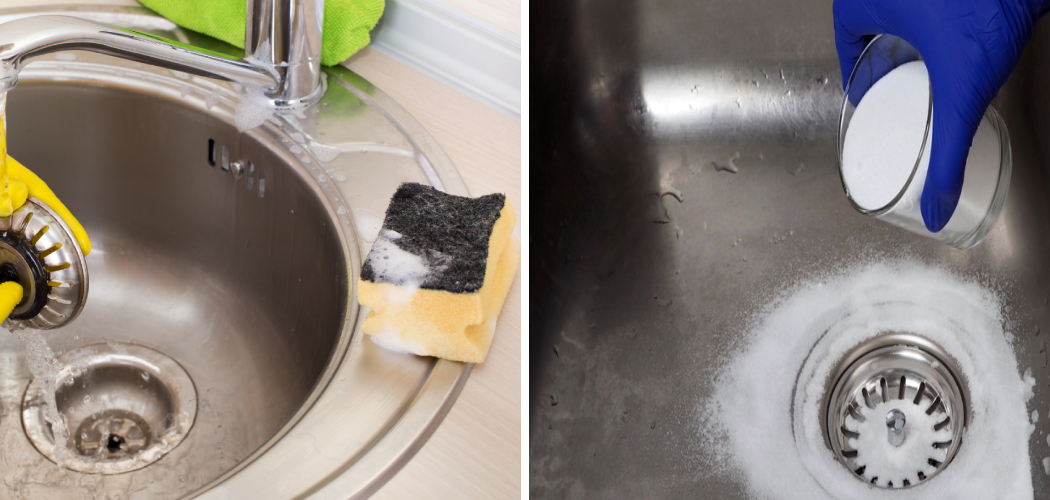Gnats can become a nuisance in the home, especially when they start breeding in moist areas like sink drains. While adult gnats are irritating, their eggs and larvae within the drains pose a bigger problem if left untreated. To effectively eliminate the issue, it’s essential to target the root cause by addressing and eradicating gnat eggs in your drains. This guide will provide simple and effective steps of how to kill gnat eggs in sink drains.

Issues Caused by Gnat Infestations
Gnat infestations can lead to a range of problems within the home, disrupting both comfort and hygiene. These tiny pests can quickly multiply, making it difficult to control their population once they establish themselves in areas like sink drains. Beyond being an annoyance, gnats can contaminate food and surfaces, posing potential health risks to inhabitants. Their presence can also signal underlying issues such as excess moisture, mold, or decaying organic matter, which may require attention. Additionally, constant buzzing and sightings of gnats can cause frustration and reduce the overall enjoyment of your living space. Addressing gnat eggs and infestations early is key to maintaining a clean and comfortable environment.
Tools and Materials Needed
To effectively eliminate gnat eggs from sink drains, you will need a few essential tools and materials. These items will help you thoroughly clean the drains and prevent further infestations:
- Rubber gloves – To protect your hands during cleaning.
- Drain brush or pipe brush – For scrubbing the inside of the drain and removing organic buildup.
- White vinegar – A natural cleaning agent that helps break down debris and repel gnats.
- Baking soda – Works in conjunction with vinegar to clean and deodorize the drain.
- Boiling water – Helps flush out eggs, larvae, and loosened debris.
- Bleach (optional) – For a stronger cleaning solution to kill eggs and sanitize the drain.
- Flashlight – To inspect the drains for buildup or visible signs of infestation.
- Disposable cleaning cloths or paper towels – For wiping down surfaces and cleaning around the sink area.
Gathering these items beforehand will ensure you are prepared to tackle the gnat problem effectively and efficiently.
10 Methods How to Kill Gnat Eggs in Sink Drains
1. Inspect and Identify the Problem
The first step in resolving a gnat infestation is confirming its source. Gnats frequently hover around drains, sinks, and nearby areas. To verify if your sink drain is the breeding ground, pour a small amount of soapy water into the drain and observe if gnats emerge. You can also cover the drain with transparent plastic wrap overnight, poking small holes in it—gnats flying up and getting trapped indicate activity inside the drain. Pinpointing the infestation source ensures you target the problem effectively.

2. Flush the Drain with Boiling Water
Boiling water is one of the simplest ways to kill gnat eggs and larvae. Heat a large pot of water until it reaches a rolling boil, then carefully pour it directly into the drain. Repeat this process two to three times daily for several days. The intense heat not only eliminates eggs and larvae but also helps dislodge organic buildup where gnats thrive. To enhance effectiveness, follow up with a sink strainer to catch debris.
3. Use a Baking Soda and Vinegar Solution
Harness the cleaning power of natural ingredients with a mixture of baking soda and vinegar. Start by pouring one cup of baking soda into the drain, ensuring it coats the interior. Follow this with one cup of white vinegar, which will react with the baking soda to create a fizzing action. This reaction loosens organic matter and suffocates gnat eggs. Allow the solution to sit for 15-20 minutes before flushing the drain with hot water. Repeat this weekly to maintain a clean, gnat-free drain.
4. Clean the Drain with a Brush
Gnats lay their eggs in the organic film that coats the walls of drains. To physically remove this breeding ground, use a long-handled drain brush. Insert the brush into the drain and scrub thoroughly, focusing on hard-to-reach areas. For added cleaning power, pair the brush with a degreasing dish soap or a commercial drain cleaner. Regular scrubbing ensures the complete removal of organic buildup, making it an inhospitable environment for gnats.

5. Apply a Bleach Solution
Bleach is a potent disinfectant that can eradicate gnat eggs and larvae on contact. Dilute one part bleach with four parts water, then carefully pour the solution down the drain. Allow it to sit for 15-20 minutes to maximize its effect before flushing with hot water. Exercise caution when handling bleach, ensuring proper ventilation and avoiding contact with other cleaning chemicals to prevent harmful reactions.
6. Install a Drain Trap
A drain trap is an effective tool for preventing gnats from entering or exiting the sink drain. Place a fine mesh screen or drain cover over the sink opening to block adult gnats from accessing the drain and laying eggs. Ensure the trap fits securely and clean it regularly to prevent clogs and maintain airflow. Combining this method with regular cleaning will significantly reduce the gnat population.

7. Set Up a Vinegar Trap Near the Sink
Reducing the adult gnat population is essential for breaking their reproductive cycle. Create a simple yet effective vinegar trap by filling a small bowl with apple cider vinegar and adding a few drops of dish soap. Place the bowl near the affected sink. The vinegar’s aroma attracts gnats, while the dish soap breaks the surface tension, causing them to drown. This method helps control the infestation while you address the root cause.
8. Use Enzyme-Based Cleaners
Enzyme-based drain cleaners are environmentally friendly solutions that break down the organic matter gnats rely on for breeding. Pour the enzyme cleaner into the drain according to the manufacturer’s instructions, typically letting it sit overnight for optimal results. These cleaners not only eliminate gnat eggs and larvae but also prevent future infestations by maintaining a clean drain environment. Regular use can keep drains odor-free and hygienic.
9. Fix Drainage and Moisture Issues
Gnats thrive in damp environments, so addressing any drainage or moisture problems is crucial. Ensure your sink drains efficiently and repair any leaks, as stagnant water is a breeding ground for gnats. Keep the area around the sink dry by wiping down surfaces after use and emptying standing water in items like dish racks. Consistently addressing moisture issues creates an environment less conducive to gnat infestations.
10. Maintain a Regular Cleaning Routine
Preventing gnat infestations requires ongoing maintenance. Incorporate regular drain cleaning into your household routine. Weekly flushing with boiling water, monthly scrubbing with a drain brush, and periodic use of baking soda and vinegar solutions can keep your drains clean and gnat-free. Staying vigilant ensures that organic buildup doesn’t accumulate, denying gnats a place to lay their eggs.

Things to Consider When Addressing Gnat Infestations
When tackling a gnat infestation, it’s essential to address the root causes rather than just treating visible symptoms. Begin by identifying the specific type of gnats in your home, as different species may require slightly varied approaches. Ensure that all potential breeding grounds, including drains, trash bins, overwatered plants, and standing water, are inspected and cleaned thoroughly. Proper ventilation and reducing excess moisture play a crucial role in preventing gnats from returning. Additionally, be mindful of using chemical solutions like bleach or commercial cleaners, especially in households with pets or children, and always follow safety guidelines. Consistency and attention to detail are key to achieving long-lasting results.
Common Mistakes to Avoid
When dealing with a gnat infestation, certain missteps can hinder your efforts or even worsen the problem. Here are some common mistakes to avoid:
1. Ignoring the Source
Addressing adult gnats alone without identifying and eliminating their breeding grounds is a common error. Gnats often lay eggs in drains, trash bins, or moist soil, so failing to clean these areas thoroughly allows the infestation to persist.
2. Overusing Chemical Solutions
While chemical cleaners like bleach can be effective, overusing them without addressing the underlying organic buildup can harm your plumbing and the environment. Additionally, improper handling of chemicals can pose health risks, especially in homes with children or pets.
3. Neglecting Maintenance
One major mistake is not maintaining a regular cleaning routine. Infestations often recur when drains and other areas with organic buildup are left unchecked after the initial problem seems resolved.
4. Overwatering Indoor Plants
Overwatered plants create a perfect environment for fungus gnats to thrive in damp soil. Failing to adjust your watering habits or not checking for gnats in the soil can prolong the infestation.
5. Using Ineffective Traps
While traps like vinegar bowls can reduce adult populations, relying on them exclusively without tackling the root cause won’t solve the issue. Traps should be used in combination with cleaning and preventive measures.
Conclusion
Eliminating gnat eggs in sink drains demands a comprehensive approach, combining effective cleaning methods with preventative strategies. By following these ten detailed steps, you can eradicate existing infestations and prevent future occurrences. Thanks for reading our blog post on how to kill gnat eggs in sink drains! We hope you found it helpful and informative.

